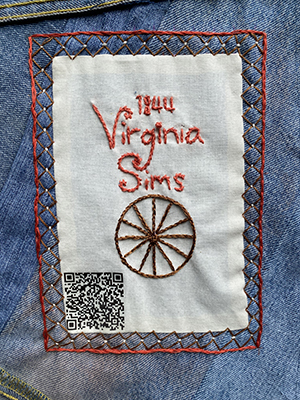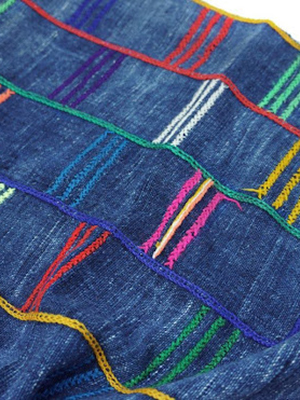Virginia Sims
"I was born in 1844. I was twenty when peace was declared. I was born in Virginia. Yes ma'am, but I was sold, put up on a stump just like you sell hogs to the highest speculator. I was sold with my mother from a man named Joe Poindexter and bought by Tom Murphy and brought to Arkansas. I was old enough to spin twelve cuts a day—had it to do. And I could weave cloth just like they do now.” – Virginia Sims, retired midwife
 Ofri Levinson ’25
Ofri Levinson ’25
Throughout the centuries, in every culture, spinning and most of the textile arts have been the work of women. This was primarily because it can be done in the home and interrupted so that the girl or woman can attend to the many needs of feeding, cleaning, and soothing a baby, as well as the myriad of other household chores that were needed for daily survival. One of the few respectable jobs a woman was allowed to have, up until the Industrial Revolution, was spinning. Single unenslaved women could support themselves by selling the yarn they made, which is where we get the double meaning of the word spinster.
In various cultures, spinners and weavers are used as metaphors for the act of creation itself. In Mali, the Dogon sage Ogotemmêli explained that “the making of cloth symbolizes the multiplication of mankind” and that every step in the spinning and weaving process could be linked to not only making a child’s life, but the creation of the universe itself. In some Indigenous American cultures, the Spider Grandmother is the spinner/weaver who created the universe. In ancient Greece, the personification of destiny were the three sisters called the Fates. Clotho, the spinner, created each person’s life. Lachesis, wove each person’s story, and Atropos cut each life off with her scissors. In Viking stories, the god Odin’s wife Frigga was the goddess mother of spinning and weaving, responsible for creating clouds and fate.
Sources
- Federal Writers' Project: Slave Narrative Project, Vol. 2, Arkansas, Part 6, Quinn-Tuttle. 1936
- Spinning Wheels, Spinners & Spinning, Patricia Baines 1978, Scribner & Sons
- Weaving In Mythology Around The World - WarpedFibers.com
- Myth and Religion - Adire African Textiles
